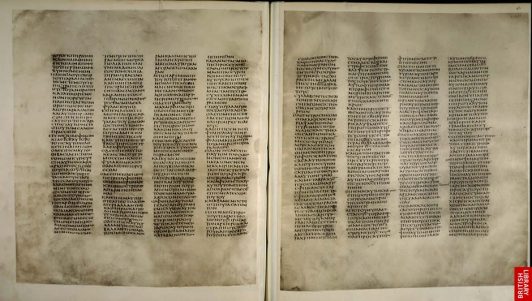
Lately, some church members have been asking questions about Bible translations. They have heard rumors that the King James Version (KJV) is the only translation that is safe to read, and that all modern Bible translations are corrupt. Is this true? Should they throw out their other Bibles and use only the KJV? What is the best Bible translation?
Since we consider the Bible to be our only standard of faith and practice, these are good questions to ask. If we truly believe that the Bible is the word of God, we will want to use a good translation for Bible reading and study. So, which translation(s) are okay to use?
The KJV Only Debate
For over a century, there has been a movement among some Protestant Christians that claims the KJV is the only English Bible translation that is faithful to the original manuscripts. They claim that all modern Bible translations are corrupt and filled with errors. The basic argument used by advocates of the “KJV Only” position is this: many words, phrases, and even entire verses and paragraphs in the Bible have been either changed or deleted from modern translations. Some even claim there is a conspiracy to change the doctrines of the Bible. Scary thought, isn’t it? Is there any evidence of this?
Let's look at the facts. As you read through the New Testament (NT) in any modern translation, you will occasionally come across a place where a verse number is either missing or put in brackets (for example, Matt 17:21; Mark 15:28; Luke 17:36; John 5:4; etc.). These versions typically have a footnote or marginal note showing the wording that is found in some later manuscripts of the Greek NT. You may also notice two large passages—Mark 16:9-20 and John 7:53-8:11—that are set off with brackets and a note stating that these sections are not found in the earliest manuscripts. Is there a problem with the manuscripts?
Ancient Manuscripts
The Bible did not drop down out of heaven one day as a complete volume written in English. It is a collection of 66 books that were written by over 40 different authors between the years 1450 B.C. and A.D. 100. The Old Testament (OT) was written primarily in Hebrew (some brief sections in Aramaic) and the New Testament (NT) was written in Greek.
In the year 1516, Desiderius Erasmus (1466-1536) produced the first printed edition of the Greek NT. He used a handful of late NT manuscripts that date from no earlier than the 11th century. These manuscripts were not perfect. In fact, none of his manuscripts had the last few verses of Revelation. Not having any other manuscripts at his disposal, he used the Vulgate (the Latin translation of the Bible) and translated the missing verses of Revelation from Latin back into Greek. If better manuscripts had been available to Erasmus, he probably would have used them. While it did have some flaws, Erasmus’ Greek NT was a landmark in the history of the biblical manuscript studies. His Greek NT went through some further revisions over the next several years, but it was essentially the basic text that translators used when they produced the KJV of 1611.

Initially, the KJV was not well-received by all Christians. Other English translations were already available, and tradition weighed heavily in favor of those older translations. But over time the KJV took hold and would become the standard Christian Bible for the next 300 years. It was a good translation, but since the New Testament had been based on Erasmus’ Greek NT, the variants and flaws of that text made their way into the KJV.
Fast forward to the 19th and 20th centuries. The study of Biblical manuscripts had come a long way since the days of Erasmus. More and more manuscripts had been discovered, including the Codex Vaticanus and the Codex Sinaiticus which date back to the 4th century. These manuscripts were considerably older than the ones that Erasmus had used. In addition to these codices, many other short fragments of the NT had been found that were dated even earlier. This wealth of manuscript evidence led to publication of new editions of the Greek NT, notably through the work of Wescott and Hortt (1881). So when new English translations of the Bible began to be produced in the late 19th and early 20th centuries, they were based on these earlier Greek NT manuscripts.
Why would translators use the earlier manuscripts instead of the later ones used by Erasmus and the KJV translators? Experts in the field of textual criticism have shown that the earlier manuscripts are likely to be the ones that are closest to the original autographs written by the apostles in the first century A.D. Are there any differences between these manuscripts and the ones Erasmus used? Yes, there are quite a few. But since most of us do not read Greek or Hebrew, our English translations are where we see the results of these differences.
Did Anything Get Removed?
A major weakness of the arguments behind the KJV-Only movement is that they usually use the KJV as the standard to judge all other Bible translations. But textual critics have shown that we must use manuscripts as the standard. You also cannot use the missing chapter and verse numbers in modern translations as an argument because those numbers were not added to the Bible until the Middle Ages. Rather than verses and phrases being taken away or changed in the modern versions, the evidence suggests that the KJV is an expanded text based on later manuscripts which were subject to copyist errors over time.
Readers who hear about this for the first time often have several questions. So let's address a few of those concerns:
- “Isn't this heresy?" No. To say that there are differences or “variants” existing in the ancient Bible manuscripts is not a matter of opinion or ideology. This is an established fact. The evidence is in the manuscripts and can be observed by anyone who is willing to look into it.
- "But wouldn't that weaken the credibility of the Bible?" Not at all. Most of the variants are slight typos or copyist errors that make no change to the message or meaning of the text. There are a small portion of variants that are slightly more substantive, but even those do not add, remove, or change any Bible doctrines. You can still trust the Bible. It has stood the test of time and God still speaks to us through it.
- "But how could that be the way God works? He has preserved the Bible. He wouldn’t allow mistakes to creep in.” Who is to say that God can’t work this way? Of course God has preserved the Bible. It’s the best-selling book of all time. We have an abundance of riches when it comes to the number of ancient copies of the Bible that have been found. There is no other work in ancient literature that comes even close to having either the same number of copies as the Bible. Furthermore, the oldest existing copies of those works came hundreds of years later than when they were originally written. By comparison, the earliest Bible manuscripts that have been found come from sometime within a hundred years of the original autographs. And again, the manuscript evidence speaks for itself.
- "How did those extra phrases get into Erasmus’ Greek NT?” There are several possible explanations. They may have been added as marginal notes by the copyists for the purpose of clarification. Some may have been attempts to harmonize passages with other portions of scripture. There are other possible explanations. But we need not be concerned. The variants found in Bible manuscripts do not change any of our doctrines. We can be thankful for the work that has been done by textual critics because it helps us wrestle with the data and make sense of it. But even if we had only Erasmus’ Greek NT, we still have an extremely well-preserved Bible that we can confidently say is the Word of God.
Seventh-day Adventists and Bible Versions
The Seventh-day Adventist Church has not officially endorsed any particular Bible translation. Some have criticized the church for abandoning the KJV because that is the version our pioneers used. But here we must remember that doctrinal understanding is not built on a single passage of Scripture or a particular wording in a certain translation. The numerous passages in Scripture that we read in any reliable Bible translation give us an overall picture of what is important to God.
Others claim that Ellen G. White used only the KJV. That is not true. One has only to look at how she used various translations and notice that she was comfortable in using a variety of translations. Yes, Ellen White used mainly the KJV, but that was by default more than anything else. It was the most common Bible in her time, but she often used the American Revised Version after it was published in 1900-1901 and the Revised Version, issued in England in 1881-1885.
What Bible Translation Should I Use?
After all of this, you’re probably wondering, “What is the best Bible translation?” The best Bible translation to use is one that you will understand and enjoy reading. Fortunately, there are many good English Bible translations to choose from. If you need some help, here are a few recommendations of modern translations in contemporary English:
- New International Version (NIV) - An easy-to-read, thought-for-thought translation. It is one of the most popular English translations.
- English Standard Version (ESV) - An excellent translation that is faithful to the original languages but is also easy to read. It often reads much like the NKJV (see below).
- New American Standard Bible (NASB) - A very accurate translation that sticks very close to the wording of the original languages. However, it can sound a bit wooden and is less readable.
- New King James Version (NKJV) - An updated version of the KJV that uses modern language, but it still sounds familiar to those who are used to reading the KJV. This version is still based on the later manuscripts that Erasmus used, but notes have been added to show where the variant readings are missing from the older manuscripts.
There are many other good translations available, such as the New Living Translation, New Revised Standard Version, Holman Christian Standard, Amplified Bible, The NET Bible, etc. But keep in mind that there is no perfect Bible translation. Each has its strengths and weaknesses. For readers who are not able to read Greek and Hebrew, comparing various translations with one another can help you determine the original meaning of the text.
If you enjoy the King James Version (KJV), then read it! It has served Christians well for hundreds of years and is a very good translation. But please understand that it is an expanded text with extra wording that is not found in the earliest manuscripts. And please respect other Christians who choose to read other Bible translations. We hope this article has shown that the KJV is not the only acceptable Bible translation for Christians to read.
Since this is a vast and complex subject, here are some recommended resources for those who would like to do further study into these issues:
Articles
Modern Versions and the King James Version
The E. G. White Counsel on Versions of the Bible
The Textus Receptus and Modern Bible Translations
Transmission and Preservation of the Biblical Text
Books
White, James R. The King James Only Controversy. Minneapolis, MN: Bethany House, 2009.
Metzger, Bruce M., and Bart D. Ehrman. The Text of The New Testament: Its Transmission, Corruption, and Restoration. New York: Oxford University Press, 2005.

